Safeguarding Children In Education
Quantity: 1

Duration 2 hours
Last audited 3rd July 2024
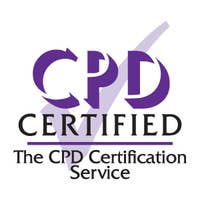

100% online training
Start when you like
Learn on any device (desktop, mobile or tablet)
Instant assessment and result
1 learner per course
Train teams of all sizes
Bulk discounts starting at 10% off 10 courses
Pay by invoice with 30 day payment terms available (5+ courses)
Includes a 10% discount for 10+ courses
Everyone involved in education must have an understanding of their responsibilities and the role they can play to safeguard students. This Safeguarding Children in Education course will help learners to identify when abuse and neglect may be happening to a student and understand how to respond appropriately to concerns.
Throughout the training, learners will develop an awareness of the general indicators of various types of abuse and neglect, including those that are more relevant to an educational setting, such as bullying, grooming and the Prevent duty. Learners will also develop an understanding of the different roles and responsibilities of headteachers, governing bodies and the Designated Safeguarding Lead.
100% online training
Access anywhere
Same day digital certificate
Printed certificate posted next working day
Full audio voiceover
Assessment retakes at no extra cost
Updated to reflect Keeping Children Safe in Education (KCSIE) Statutory Guidance
Developed by a qualified child protection professional
Accredited by CPD
Earn 2 CPD points on completion
Bulk discount for orders of 10+ courses
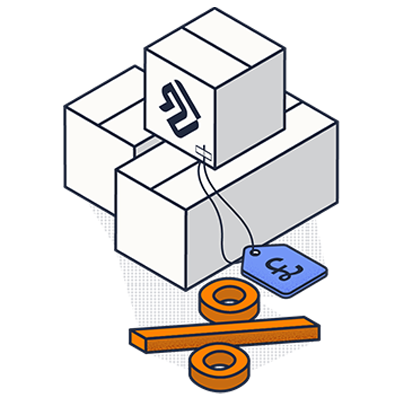
Save on our courses when you buy more training upfront. Lock in a better price now and access the training whenever you need to. You can mix and match any of our courses too and get the discount off your whole order.
10+ courses = 10% off
50+ courses = 20% off
100+ courses = 30% off
500+ courses = 40% off
By the end of this course, learners will:
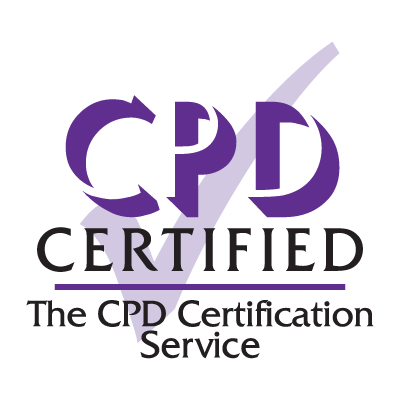
Accredited by CPD
All of our courses are accredited by the CPD Certification Service as conforming to universally accepted Continuing Professional Development (CPD) guidelines.
Recommended renewal:
3 years
What does this mean? This certificate does not have an expiry date, however, based on industry best practice guidelines there is a recommended renewal period.
Our in-house Learning Designers develop all of our courses to give you and your learners the most engaging training possible.
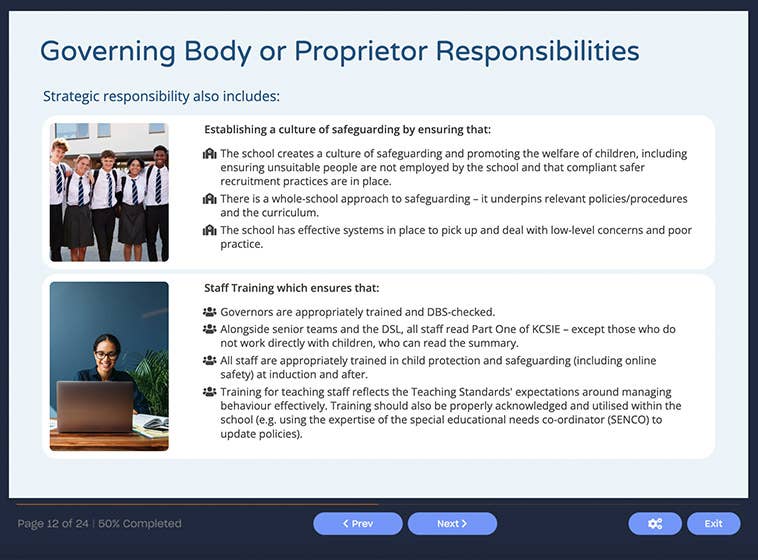
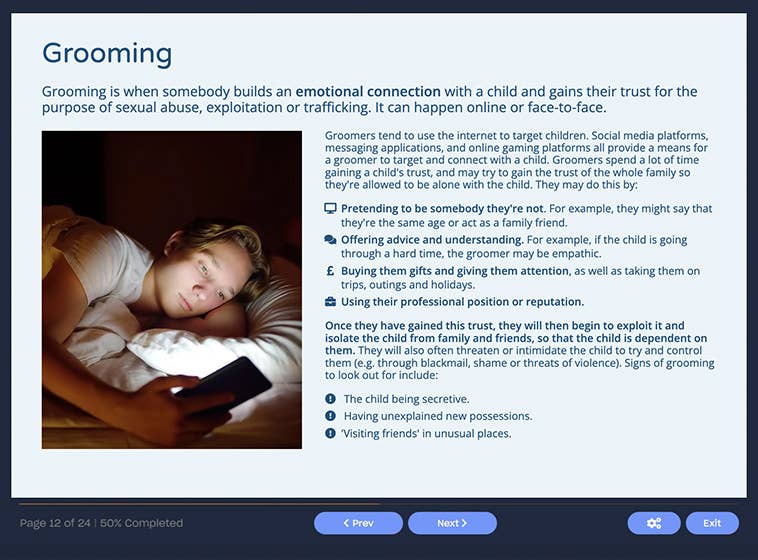
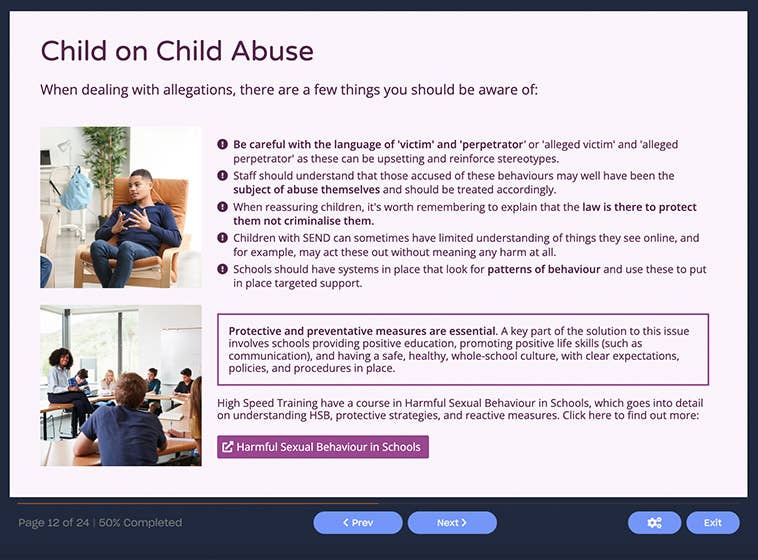
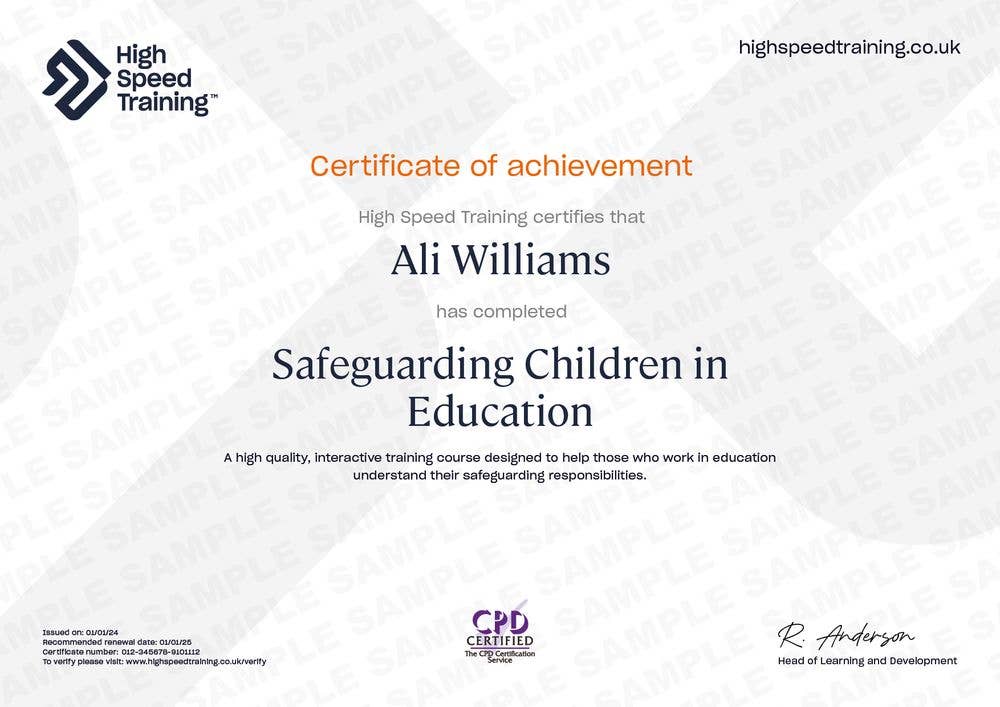




Why this course is important, laws and guidance and the difference between safeguarding and child protection.
Keeping Children Safe in Education, individual responsibilities, governing body or proprietor responsibilities, headteacher responsibilities, DSL responsibilities, training, online safety and students absent from education.
Where does abuse take place?, signs of abuse in a student, general indicators, physical abuse (bruising, bite marks, burns and scalds, fractures, scars), recognising emotional abuse, recognising sexual abuse and recognising neglect.
Radicalisation, extremism and terrorism, Prevent, reporting concerns, Prevent guidance, female genital mutilation (FGM), forced marriage and modern day slavery.
Child sexual exploitation (CSE), child criminal exploitation (including County Lines), serious violent crime, grooming, online abuse, child trafficking, harmful sexual behaviour, child-on-child abuse, cybercrime, bullying and cyber bullying, domestic abuse, self-harm and self-neglect, other issues, children with additional vulnerabilities.
Dealing with disclosures of abuse, concerns about abuse, recording information, confidentiality and record keeping, the single assessment process, no additional needs, early help, child in need, child protection, identifying children who might need early help, child protection procedures, local authority child protection procedures, looked after children and safeguarding, working with parents and further resources.
The online assessment is taken on completion of the training material. You will be asked 20 multiple choice questions with a pass mark of 80%. The answers are marked automatically so you will instantly know whether you have passed. If you don't pass don't worry! You can take the test as many times as you need with no extra charge.
Everyone who comes into contact with students, including those over the age of 18, has a responsibility to help safeguard children. This safeguarding children course is designed specifically for those who work in an education setting, including:

In partnership with
Antonia Noble
Barrister and Safeguarding Specialist
Antonia Noble is a criminal barrister with over 29 years of experience. She is also a highly respected safeguarding specialist both in the UK and Internationally.
She has worked in the public sector at the Criminal Cases Review Commission and as a Cabinet Member at a large county council with responsibility for services including safeguarding, and child protection including multi-agency working at the most senior level.
Antonia has a range of safeguarding and child protection experience including education at all levels. She is currently the Chair of SAND Multi Academies Trust.